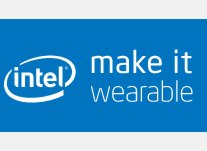| Intel Asks Us To Make It Wearable |
| Written by Sue Gee | |||
| Thursday, 16 January 2014 | |||
|
Intel's latest challenge is for designing wearable technology. It is offering more than $1.3 million to entice developers to join in a revolution in which personal computing is redefined and becomes part of who we are as digital technology becomes integrated with the physical. Announcing the year-long Make IT Wearable Contest, the Creators Project describes it as an initiative: that will hyper-charge the relationship between technology, and anything that can be worn, implanted, grown, and more. Intel's Make It Wearable video gives more details and in it Steve Brown, who has the job title "Futurist" at Intel states: We want to harness the best people on the planet and create something which blows the world away.
The Creators Project blog points out that as well as cash prizes, totalling $1.3 million the winners of will also have the opportunity to connect with "industry luminaries" to help realize their ideas. It outlines two ways in participate in the contest:
According to the Make it Wearable site FAQ's, the contest is open to "anybody with ideas" aged 13 or older subject to some territorial restrictions that will be included in official rules that will be published when registration for the Visionary Track opens on February 24, 2014. Contestants can enter both tracks and make multiple submissions (up to ten) to the Visionary track.
Entries for the Visionary track consist of 1-minute videos and judges will be looking for:
There will be five rounds for this track throughout the year with winners from each receiving $5,000 in funding to attend the MAKE IT WEARABLE final presentation and gala event.
The Development Track opens in summer 2014 and for submission of "innovative, feasible concepts" its judging criteria are:
It will have three rounds in which participants who advance to semifinal and final rounds will receive mentorship. Ten finalists will receive US $50,000 and intensive mentoring to help get their ideas off the ground and attend the final presentation and gala event. The grand prize winner will receive US$500,000 with US$200,000 and $100,000 awarded to second and third place winners.
More InformationIntel Announces 'Make It Wearable' Challenge Related ArticlesIntel Perceptual Computing Challenge Pebble Appstore To Launch This Month Intelligent Textiles - Wearable Absence
To be informed about new articles on I Programmer, install the I Programmer Toolbar, subscribe to the RSS feed, follow us on, Twitter, Facebook, Google+ or Linkedin, or sign up for our weekly newsletter.
Comments
or email your comment to: comments@i-programmer.info
|
|||
| Last Updated ( Thursday, 16 January 2014 ) |



